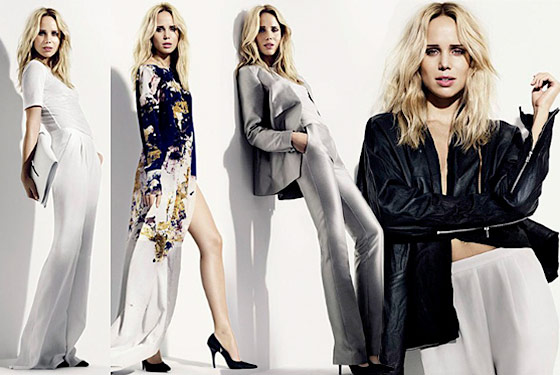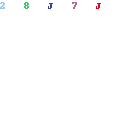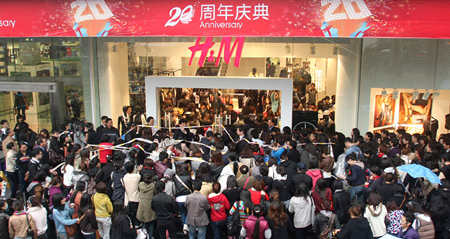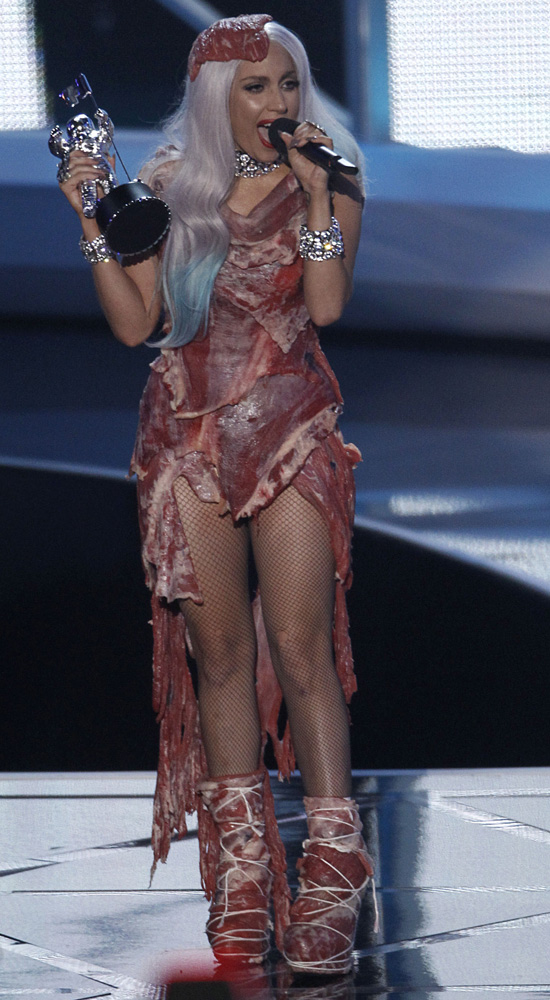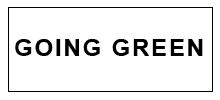photo via: Net-a-Porter
To start, Net-a-Porter, the widely successful online luxury boutique, recently introduced a "magazine" section to their site. With weekly issues, their digital magazine has everything a traditional paper copy would have: articles featuring new designers, reviews of the latest films, inspiration shots behind their photo shoots, and trend reviews of what's in for next season. But what's even better is that the content is directly connected to their online shop. It's true that it's not the same experience as physically holding a fresh glossy magazine in your hands to browse at your perusal, but clicking through a highly funded, well-executed online zine and then having the ability to immediately buy what you see is pretty neat, (and maybe even better). Their men's department, MrPorter.com, is also moving into a similar direction as they recently hired Jeremy Langmead, former editor of British Esquire, as it's new editor in chief.
photo via: WWD
Designer and commercial brands alike have also followed suit with similar ideas to engage their guests: Donna Karan shares her "journal", Tory Burch offers her city guides, Anthropology has The Anthropologist, Alice+Olivia shares their 4 AM Finds, and Club Monaco has it's own Culture Club. Even Best Buy, the mega electronic store, recently saw in-store sales shrink under pressure from the Web and in response, launched On, a digital mag-a-log with editorial content and advertisement from other brands. Catered to electronic enthusiasts, they offer everything from gift ideas, product reviews, "Geek Squad" tips, and tons of how-to's for your new toys and gadgets. Realizing that there are more people online, many brands are realizing the importance of generating conversation with their customers and keeping them interested through this new platform.
photo via: eBay
Earlier this month, eBay hired Andrea Linett, former creative director of Lucky magazine, and appointed her as their new creative director of eBay Fashion. Attempting to enliven the experience of online shopping to a more digital flea market, they are working on adding more upscale imagery to recreate the same feel of a glossy magazine. With an edition of flash sales and exclusive collections with designers like Derek Lam, eBay is on it's way in establishing it's presence in the online fashion and apparel industry.
Since bloggers have really pioneered the way for the marriage of fashion and social media, it only makes sense that Tumblr, the image-heavy platform, hired Rich Tong, the founder of the user generated street style site Weardrobe.com, and appointed him as the newly created role of fashion director. One of their first events include sending 20 of their bloggers to the upcoming New York Fashion Week and hosting a real-time feed of their content at Tumblr.com/nyfw. Participating Tumblrs include What I Wore; Peace, Love, Chanel; and SaraZucker.com. All bloggers will receive complimentary flights, accommodations, dates with brands and designers, and access to several shows. They will also be attending the Independent Fashion Bloggers' conference and the Bloglovin awards.
Since bloggers have really pioneered the way for the marriage of fashion and social media, it only makes sense that Tumblr, the image-heavy platform, hired Rich Tong, the founder of the user generated street style site Weardrobe.com, and appointed him as the newly created role of fashion director. One of their first events include sending 20 of their bloggers to the upcoming New York Fashion Week and hosting a real-time feed of their content at Tumblr.com/nyfw. Participating Tumblrs include What I Wore; Peace, Love, Chanel; and SaraZucker.com. All bloggers will receive complimentary flights, accommodations, dates with brands and designers, and access to several shows. They will also be attending the Independent Fashion Bloggers' conference and the Bloglovin awards.
Although Tumblr did not begin as a fashion-focused blog site, it has become a host to thousands of fashion bloggers, largely inspiration-based blogs, posting product shots, runway images, and editorials. They are valuable to brands as their sites are like free advertisement, reaching young fashionistas all across the world in a powerfully influential way through peer recommendations and conversation. Making fashion more transparent, bloggers have become an invaluable asset to many brands today.
H&M has taken blogger collaborations to the next level and launched a limited collection with the Scandinavian personal-style blogger Elin Kling as the guest designer. With a list of past collaborators including renowned design houses like Lanvin, Stella McCartney, and Karl Lagerfeld, H&M's decision to collaborate with a blogger who only launched her site in 2007 reflects a huge shift in who the customers are looking up to for style inspiration.
14-year-old blogger Tavi Gevinson also found blogging as a stepping stone to achieve greater opportunities, appearing in articles for US Harper's Bazaar, Teen Vogue, and holds future plans to launch a new magazine with Jane Pratt, founder of the now defunct Jane magazine.
We no longer live in the times where publishing, media, and retail businesses act as separate entities. The future calls for a more integrated way of doing business; the lines have blurred and multi-tasking is essential to every fashion professional's resume.H&M has taken blogger collaborations to the next level and launched a limited collection with the Scandinavian personal-style blogger Elin Kling as the guest designer. With a list of past collaborators including renowned design houses like Lanvin, Stella McCartney, and Karl Lagerfeld, H&M's decision to collaborate with a blogger who only launched her site in 2007 reflects a huge shift in who the customers are looking up to for style inspiration.
14-year-old blogger Tavi Gevinson also found blogging as a stepping stone to achieve greater opportunities, appearing in articles for US Harper's Bazaar, Teen Vogue, and holds future plans to launch a new magazine with Jane Pratt, founder of the now defunct Jane magazine.
WWD names this new marketing tactic as "edvertorial", advertising meets editorial, birthed from social media and the convergence of entertainment and marketing. Tom Jarrold, chief marketing officer at A|X Exchange states, "The effect on the consumer is a more rich experience. It's a message that can be a part of and interact with instead of it being broadcast at them." If done correctly, advertising is less in-your-face and more subtly integrated to the modern shopping experience. Instead of feeling hassled and bombarded by retailers, customers are more excited to shop as companies have learned to ingeniously incorporated marketing skills through a combination of social media and capabilities of the digital platform.
As the online world offers an infinite amount of space and a world-wide audience, companies have more flexibility and creative capabilities to drive their businesses. However, creating content that people will pay attention to while being careful of presenting the right personality to the brand is key. With this new trend, not only will we be seeing innovative brand strategies, but also a shift in job roles and skill sets. What we are seeing now is just a glimpse of what we mentioned earlier in our video last year. It's exciting to see and we are definitely keeping our eyes open to share with you with what will happen next.




